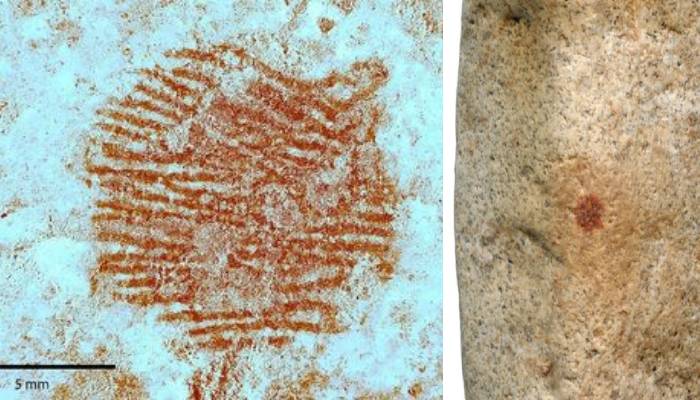Scientists in Spain have found what they believe is the oldest complete human fingerprint on a rock.
The fingerprint is thought to be made by a Neanderthal around 43,000 years ago using red pigment.
This rock looks like a human face and the red mark is placed where the nose would be.
"The strategic position of the dot has led scientists to see it as evidence of Neanderthals' symbolic behaviour, suggesting they had the ability to think about things in an abstract way," reported BBC.
As per the outlet, in 2022, the researchers found the special stone buried under 1.5 meters of soil during excavation.
This soil had built up over time from when Neanderthals lived in that area.
Prof de Andrés-Herrero from the University of Complutense in Madrid said in a statement, "At the beginning we couldn't believe what we were looking at, because there was a bigger stone in comparison to other stones that appeared at this site, with a red dot just in the middle which looked like a human face."
Neanderthal's deliberate red pigment mark found:
At first, scientists weren’t sure if the red dot on the stone was made with ochre, a natural type of red clay.

But once they confirmed it was indeed pigment, Professor Herrero said they asked Spain’s scientific police for help.
Their research, which was published in the journal Archaeological and Anthropological Sciences showed that the fingerprint most likely belonged to an adult man.
The fingerprint was found on a stone that wasn’t used for practical purposes, suggesting the red dot was made as a form of art.
Researchers explained that Neanderthal likely noticed the stone because of its cracks or patterns and deliberately put a red pigment mark on it to decorate or highlight it.
"Researchers believe the mark was not accidental because, according to their findings, the red pigment does not exist naturally in the shelter, meaning it was intentionally brought to the shelter," reported BBC.












